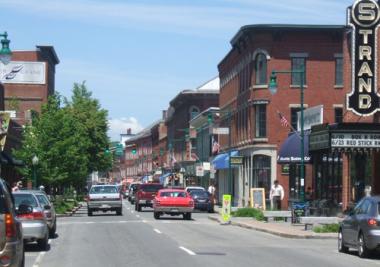Do you have an especially practical member in your family? Someone who listens patiently to your plans to go ziplining in the rainforest, and then says calmly, "We could have just as much fun at a bed and breakfast in Maine"?
I could get sacked for saying this, since I work for an international travel website, but they're absolutely right. The Gulf of Maine is one of the most beautiful places on earth, and it's a great place for a family vacation because there's so much to do. Try a weekend there and you'll come back for at least a week.
My friend George and I recently took a trip on the quintessential American highway, U.S. 1, to Rockland, Maine—"Rock City, U.S.A."— on Penobscot Bay. We had plenty of fun there. Downtown Rockland has a newly renovated theater, The Strand, for movies, concerts and other performances; no fewer than 24 art galleries and studios; the world-famous Farnsworth Art Museum; the new Maine Lighthouse Museum; lots of first-rate restaurants; and a lot of cool new 21st-century businesses, the kind run by people who love what they're doing.
There are shipbuilding demonstrations at Atlantic Challenge and golfing and conference facilities at the Samoset Resort. Close by are the Abbe Native American Museum, the estate of Revolutionary War hero Henry Knox and many beautiful ponds for swimming and canoeing.
We went out and pulled traps with a lobsterman and found out all about the life cycle of the world's favorite crustacean. We gawked at World War I biplanes at the Owl's Head Transportation Museum—real Fokkers and Sopwiths that still fly.
We took a dinner cruise amongst all the beautiful little islands in the bay, and learned about the restoration of the puffin, the world's cutest and cuddliest seabird, at the Puffin Center on Main Street. We went sailing on the schooner Morning in Maine (or is it a ketch?), part of Rockland's famous fleet of historic sailing vessels.
We got up 5:30 a.m. and went fishing for striped bass, a game fish you can't buy at the market. Even I caught one. We toured the Lighthouse Museum and three historic Victorian mansions and visited the Farnsworth Art Museum, which has one of the finest collections in the world.
But for me the highlight of the trip was the Farnsworth Homestead, a part of the Farnsworth Museum, where I met Miss Lucy Farnsworth. She passed away in 1935 at the age of 97, but there in her home among all her family's possessions, I felt a close personal connection.
She used to dress all in black and the local children called her a witch, but it was Miss Lucy Farnsworth, more than anyone else, who helped to bring about the Rockland Renaissance more than half a century later.
Lucy Farnsworth preserved the house in mint condition for 97 years. In her will she bequeathed $1.3 million to found the Farnsworth Library and Art Museum, and the Homestead is now part of the museum complex that also includes, besides the permanent collection, the Wyeth Center and the Olson House in nearby Cushing, the subject of many paintings by Andrew Wyeth.
Unlike its more affluent neighbors, Rockland was always a working class town. With the disappearance of the limestone industry and the fishing industry, jobs became few and far between, many storefronts were boarded up, property values sank and the downtown became a place many people avoided.
Ten years ago, the artists provided the nucleus for Rockland's economic comeback. Due in large part to the Farnsworth Museum, artists from around the area began to locate in downtown Rockland, boosting the area's revitalization. When a town goes from one art gallery to 24 art galleries in 10 years, that's what you call a social indicator.
This story appears in longer form on GoNOMAD.com, with listings for activities, lodging and dining in the Rockland area.



